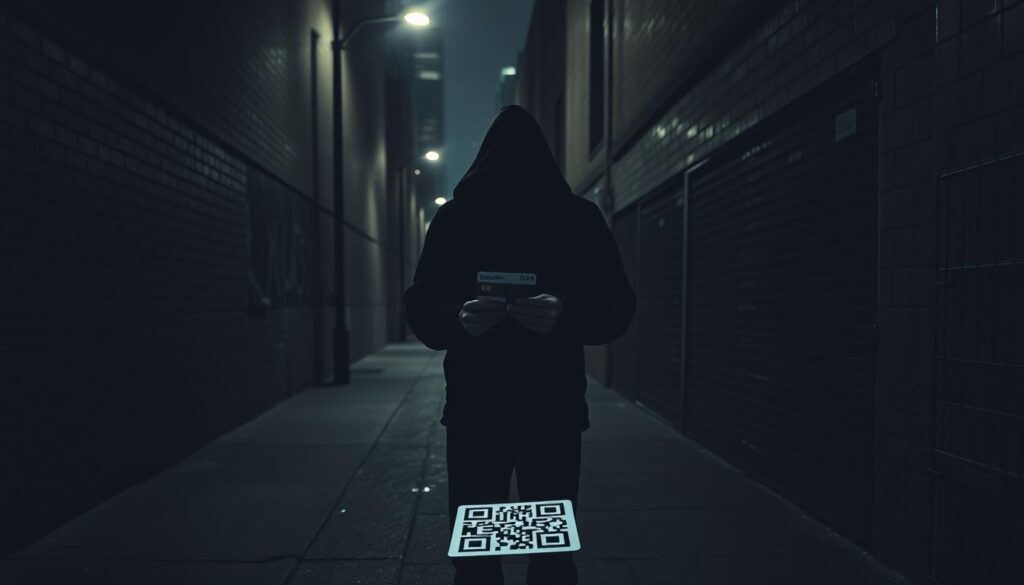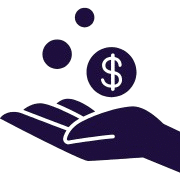How to Avoid Common Credit Card Scams
Almost one in three payments in the U.S. now uses a credit or debit card, and that popularity draws fraudsters looking for personal information and easy gains.
Reports to the Federal Trade Commission show more than 480,000 incidents of card fraud tied to identity theft in 2024, making credit card fraud the top form of identity theft. That steady volume means smart habits matter more than ever.
This guide explains why learning how to avoid common scams matters now. You will see how scams work in real life, what to watch for, and practical steps to cut risk and act fast if fraud happens.
Expect clear sections on phishing, overcharge and refund ruses, QR and skimming threats, mail and application fraud, plus monitoring and recovery steps. Recommendations favor verified contacts, secure browsing, and using built‑in protection with early detection for best results.
Key Takeaways
- Card use is widespread, but built‑in protection works best with sharp habits.
- Credit card fraud topped FTC identity theft reports in 2024.
- Learn to spot impersonation and payment‑flow ruses early.
- Use official channels and verified contact methods for disputes.
- Monitoring and quick response cut damage after an incident.
Why credit card scams matter right now in the United States
As more people pay digitally, opportunistic fraudsters follow the money into everyday transactions. In 2024 the Federal Trade Commission logged more than 480,000 reports tied to identity theft, an 8.4% rise since 2022.
Credit card fraud is now the most reported form of identity theft. Q1 2025 visuals confirm that shift, driven largely by card‑not‑present schemes and fake merchant setups.
What higher FTC cases mean for daily payments
More reports reflect both more attempts and better reporting. Issuer alerts help, but they cannot catch every suspicious activity. You still need to watch transactions and set real‑time notices.
How fraud patterns affect how you pay
Fraudsters often test accounts with small trial charges before making larger purchases. That makes frequent reviews important.
- Tip: Turn on push notifications for every transaction.
- Tip: Verify merchants before entering information on unfamiliar sites.
- Tip: Treat small unknown charges as possible early warnings.
Avoid Common Credit Card Scams
Everyday transactions now face targeted attempts to grab card numbers and personal information. Scammers use believable pretexts and tampered hardware to harvest data quickly.
Phishing, smishing, and vishing: email, text, and voice messages impersonate banks or merchants to coax you into revealing card details or login credentials. These social engineering plays work because they create urgency and trust.
Overcharge and refund ruses: fraudsters ask you to “verify” a refund or process a credit. That request often masks a data grab to collect payment numbers and CVV codes for later misuse.
QR quishing and fake checkout prompts: stickers or links route to bogus payment portals that capture information or drop malware. Fake “transaction declined” pages can push multiple checkout attempts and widen exposure.
Skimming, shimming, and mail threats: tampered devices on pumps and ATMs steal magstripe or chip data, while intercepted mail can fuel account takeover or new‑account fraud.
“Distrust unsolicited requests; verify via official channels and use secure devices to reduce risk.”
- Trust official contact methods, not links or callers who ask for sensitive data.
- Check terminals for loose parts and keep software updated to block keyloggers and malware.
Phishing, smishing, and vishing: how impersonation steals your card details
Scammers use email, text, and phone calls that mimic real businesses to trick you into sharing sensitive data. These messages create pressure with urgent language and realistic visuals so people act without checking facts.
What these scams look like in email, text, and phone calls
Email: Spoofed domains, generic greetings, and links to look‑alike sites that harvest personal information and card details.
Smishing: Shortened URLs and fake delivery or bank notices asking you to “confirm” activity. Never tap links from unknown senders.
Vishing: Callers posing as a card company’s fraud team ask for CVV, one‑time codes, or passwords. Real issuers do not request those items.
Red flags: urgent “suspicious activity” and requests for CVV or passwords
Watch for threats of account closure, pressure to stay on the line, or requests to pay or “verify” by giving credentials.
One LSS Financial Counseling case shows a vishing caller asked for a CVV to “investigate suspicious activity” and then charged nearly $500. That single disclosure caused immediate loss.
Do this instead: stop, verify through official channels, and report
If contacted, hang up or ignore the message. Locate the official number on the back of your card and call the credit card company directly.
Report the attempt to your issuer and to FTC complaint channels when appropriate. Enable multi‑factor authentication and stop reusing passwords to limit damage if one login fails.
Skimming and shimming: spotting tampered readers before you pay
Before you slide or insert a card, learn how criminals hide devices that steal magnetic and chip data.
How skimming works: Skimming devices record the magnetic stripe’s track data as you swipe. Criminals then clone that data to make unauthorized purchases or create fake cards.
What shimming does: Shimming targets EMV chips with thin inserts placed inside the slot. These super skimmers read chip communications and are often invisible from the outside, making them more insidious.
Signs of tampering: look for mismatched colors, oddly bulky housings, loose bezels, broken seals, or different-looking readers across pumps.
Wiggle the reader and keypad. Shield PIN entry with your hand. If anything feels loose or off, use another terminal or pay inside.
“If a reader looks altered or bulky, report it to the manager and choose a different payment method.”
- Prefer contactless tap-to-pay or mobile wallets that use tokenization.
- Avoid isolated ATMs and unattended terminals after hours.
- Report suspected tampering to staff or the bank right away.
Digital threats: keyloggers, unsafe Wi‑Fi, and malicious links
A single click on a dodgy link can install software that records everything you type, including login codes and payment numbers. Keyloggers and trojans often run unseen and forward captured data to remote servers.
How malware records your number and login credentials
Keyloggers infiltrate devices through phishing links, pirated software, or trojanized apps. Once installed, they silently capture passwords, form fields, and payment details.
Some malware also grabs session tokens or screenshots, letting thieves replay sessions and complete purchases.
Protective steps: security software, HTTPS, VPN, and safe downloads
Reduce exposure: avoid public Wi‑Fi for payments, or use a reputable VPN when you must. Only enter sensitive data on sites with HTTPS and a valid certificate.
Enable automatic OS and browser updates and run real‑time antivirus/anti‑malware. Scan devices if they run slowly or behave oddly.
- Download apps only from official stores and check developer names and reviews.
- Use strong, unique passwords and a password manager to limit damage from a single breach.
- Turn on bank and card provider alerts and consider credit monitoring to help protect credit early.
“If a device acts strange after a download, disconnect, scan, and change passwords from a known‑good device.”
Overcharge, “transaction declined,” and QR code traps to avoid
A sudden refund notice or a pasted QR code can be a setup that steals billing data and installs malware. Scammers impersonate well‑known brands to force urgency and trick you into confirming payment or retyping information.

Refund verification messages that ask for confirmation
Fake emails or texts claim an overcharge and request you to “confirm” card details to process a refund. That confirmation hands thieves what they need to run unauthorized purchases.
Oregon DOJ warns some messages also carry links that install malware when opened.
“Transaction declined” pages and repeated data grabs
Illicit sites often show a failed payment page after you enter information. They ask you to retry or add another method, capturing the same data twice.
BBB reports include a fake store where a “payment declined” loop led to thousands in losses.
Quishing in public spaces
Fraudsters stick QR overlays on menus, meters, and tables. Scanning routes you to realistic payment pages that harvest card details or push malicious downloads.
- Check URLs: watch for misspellings, odd subdomains, and inconsistent branding; verify HTTPS and type known domains directly.
- Scan wisely: use official apps or on‑site kiosks, and only scan codes from trusted signage.
- Verify independently: contact the real company through its official site or phone number if you get a refund notice; never reply via the message link.
“If a payment request feels urgent or unfamiliar, stop and confirm through verified channels.”
Mail theft and new‑account fraud: safeguarding your mailbox and identity
When postal items vanish, criminals can build a profile of your financial life from a single envelope. Stolen mail can include replacement cards, statements, and enough personal information to fuel identity theft or open new accounts in your name.
Interception risks: replacement cards and statements
What thieves can get: replacement cards, partial account numbers, and billing statements that reveal addresses and account activity. These items help criminals request PIN resets, impersonate you, or file fraudulent applications.
Defenses: paperless statements, USPS holds, and prompt activation
Simple steps cut exposure. Switch to electronic statements and shred any sensitive mail you do receive. Activate new cards immediately and never leave them unattended in communal mail areas.
- Use USPS Hold Mail or ask a neighbor to collect mail when you travel.
- Consider a locked mailbox or P.O. box in high‑risk or multi‑unit buildings.
- Monitor accounts for unexpected activation notices or mailings you did not request.
- If expected mail doesn’t arrive, contact your issuer to cancel and reissue and ask to add extra verification to your account.
“Early action helps protect credit by stopping fraudulent use of intercepted materials and preventing new accounts from being opened.”
How to detect suspicious activity early before bigger losses
Spotting strange activity quickly helps stop losses before they grow and simplifies recovery.

Turn on account alerts for real‑time monitoring
Enable alerts for every transaction or set thresholds for large or foreign purchases. Many issuers offer instant push or SMS notices for atypical activity.
Real‑time notifications let you respond within minutes rather than days, which cuts the window fraudsters use to expand unauthorized purchases.
Review statements and credit reports regularly
Scan monthly statements line by line and dispute any unfamiliar charges immediately—even small ones that may be test transactions.
Check your credit report often; as of Sep 17, 2025, consumers can obtain reports more frequently to spot new accounts or hard inquiries you didn’t authorize.
Recognize small “test” charges and unusual spending patterns
Repeated declines, foreign currency transactions, or merchant types you never use can signal compromised details.
Combine alerts with scheduled full reviews: alerts give immediacy, reviews give broader oversight of your accounts.
- Turn on alerts for all transactions or strict thresholds.
- Dispute unknown purchases right away, even if they are tiny.
- Use credit monitoring and regular credit report checks to catch new accounts.
“Early detection limits losses, speeds disputes, and helps protect credit by preventing delinquency on fraudulent accounts.”
What to do right after you’re a victim of credit card fraud
If you discover unauthorized activity, act fast to limit losses and document every step. Time matters: call the number on the back of your card to block the account and dispute charges within 60 days of the statement date.
Contact your issuer and replace the card
Contact credit card support using the printed phone number. Ask them to freeze or cancel the compromised card and issue a new number. Get a case or reference number and note the representative’s name.
Lock down accounts and passwords
Change passwords for banking, email, and shopping accounts. Enable two‑factor authentication and revoke remembered devices or active sessions to cut off unauthorized access.
Place alerts, freezes, and file reports
Place a fraud alert or a security freeze with Equifax, Experian, or TransUnion; the bureau you call will notify the others for alerts. Report identity theft at identitytheft.gov and file an IC3 complaint with the FBI. Some issuers may ask for a local police report — get one if requested.
- Review credit report lines and statements for new accounts or strange inquiries.
- Keep a written log of calls, dates, and case numbers to help protect credit and speed resolution.
“Document every contact and action; clear records help disputing charges and restoring accounts.”
Conclusion
Smart habits and quick action together form the best defense against evolving threats.
Protect your accounts by verifying requests through official company channels and by treating unsolicited messages with skepticism. Use strong passwords, update devices, and prefer contactless or tokenized payments to limit exposure of card information.
Remember the most common types of card fraud: phishing by email or phone, tampered readers, malicious links, QR traps, and mail theft. These schemes persist because criminals adapt to where people transact most.
Layered protection—alerts, credit monitoring, paperless statements, and prompt reporting to your issuer, the Federal Trade Commission, or IC3—reduces harm and speeds recovery.
No single move stops every attack, but steady routines and vigilance will keep your cards and accounts more secure over time.
FAQ
Why do these scams matter right now in the United States?
Reports of identity theft and unauthorized transactions have risen, making financial fraud a top consumer complaint. Increased online shopping, digital payments, and remote account access give criminals more opportunities to exploit weak links like poor passwords, unsecured Wi‑Fi, or intercepted mail.
How common is identity theft related to payment methods today?
Identity theft tied to payment instruments remains one of the most reported forms of theft. Criminals target payment details, account logins, and personal data because those items let them make purchases, open accounts, or request card replacements in a victim’s name.
What should I watch for in phishing, smishing, and vishing attempts?
Look for messages that create urgency, request full verification data, or use spoofed sender addresses and fake caller IDs. Scammers ask for CVV, full PINs, or login codes. Legitimate firms won’t demand passwords or one‑time codes via email or text.
If I get a suspicious message, what’s the right response?
Stop, don’t click links or call back from the message. Verify using the company’s official website or phone number, not any contact info the message provides. Report the incident to your provider and block the sender.
How do skimmers and shimmers capture magnetic stripe or chip data?
Skimmers attach to card slots and read magnetic stripes when you swipe. Shimmers sit inside readers and capture EMV chip data. Both can be paired with hidden cameras or fake keypads to record PINs.
What are the signs a pump, ATM, or terminal has been tampered with?
Check for loose or misaligned card readers, sticky residue, extra parts that wiggle, or suspicious cameras aimed at keypads. If something looks off, pay inside, use another machine, or use a contactless method.
How can I protect myself from malware, keyloggers, and unsafe Wi‑Fi?
Keep devices updated, run reputable security software, use HTTPS websites, and avoid public Wi‑Fi for transactions. Use a VPN when you must access accounts on public networks and download apps only from official stores.
What are refund‑verification and overcharge ruses and how do they work?
Scammers pose as merchants or support agents claiming a refund or failed charge. They ask you to “confirm” card details or to enter information into a link, which captures data for unauthorized use. Never share full card details to verify a refund.
What is QR code “quishing” and where does it appear?
Quishing uses fake QR codes that lead to fraudulent payment portals or malware. Criminals place them on menus, parking meters, flyers, or public kiosks. Always confirm the source before scanning and compare QR destinations to expected domains.
How does mail theft lead to account takeover or new‑account fraud?
Thieves who intercept mail can steal statements, replacement cards, or preapproved offers. With those details plus personal data, they can activate cards, change addresses, or open accounts in your name.
What steps reduce the risk of mail interception and identity takeover?
Opt for electronic statements, request USPS holds when you travel, retrieve mail promptly, and use a locked mailbox. Shred discarded statements and monitor mail for unfamiliar replacement cards or notices.
How do I spot suspicious activity on my accounts early?
Enable real‑time alerts for transactions, set low thresholds for notifications, and review statements frequently. Watch for small test charges, unfamiliar merchant names, or repeated declines that you didn’t cause.
What immediate actions should I take if I notice unauthorized charges?
Contact your card issuer to dispute charges and request a replacement. Freeze or cancel affected accounts, change passwords, and enable two‑factor authentication. Document the fraud and keep copies of all communications.
Should I place a fraud alert or credit freeze after an incident?
Yes. A fraud alert warns lenders to verify identity before opening new accounts. A credit freeze blocks new credit applications entirely. Contact Equifax, Experian, and TransUnion to set these protections.
Where should I report fraud beyond my issuer?
File a complaint with the Federal Trade Commission and report online crime to the Internet Crime Complaint Center. Your reports help authorities track trends and may assist in recovery steps or investigations.
How can I reduce future exposure and recover confidence after a loss?
Replace compromised cards, rotate passwords, use unique passwords with a manager, enable account alerts, and consider credit monitoring. Regularly review your credit reports and stay informed about new tactics used by fraudsters.
